- Home
- Tanith Lee
Weird Tales #325
Weird Tales #325 Read online
COPYRIGHT INFORMATION
Copyright © 2001 by Terminus Publishing Co., Inc.; all rights reserved; reproduction prohibited without prior permission.
Published by Wildside Press LLC.
www.wildsidebooks.com
THE EYRIE, by the Editors
NECon Memories
We write this immediately after our (or precisely, Darrell’s, speaking in the editorial plural) return from one of Horrordom’s most pleasant annual events, the Northeast Regional Fantasy Convention, a.k.a. NECon (pronounced “nee-con”) or even Camp NECon. It is held every July at Roger Williams College in Bristol, Rhode Island. It has been only half-jokingly described as “summer camp for horror writers.” There is even a camp t-shirt.
NECon is friendly, open to all, but it also has the aspect of a family reunion. We have been attending NECons for twenty years and see many of the same people each time. Chairman Dan Booth, son of founder Bob Booth, was practically a toddler when these conventions began. Now he’s running things. Some of the other long-time attendees, luminaries in the field, include Peter Straub, Dallas Mawr (a.k.a. Jack Ketchum), Les Daniels, Ginjer Buchanan, Rich Hautala, Roman Ranieri, Jill Bauman, and many more.
Sure there are panels, and good ones too. We were on one called “Back in Black: Horror is Back and Boy is It Pissed,” which was all about the cautious revival of horror publishing in the conventional, New York publishing world. A new boom is about two years away, cautious optimists tell us. Indeed, this was the sort of panel which would enable any professional to convince his tax accountant to let him write the whole weekend off as “business.” Here we had the inside scoop from editors of Tor, Ace, and Leisure. Also yours truly, who spoke about magazines, and also put in a word for the horror small press — Cemetery Dance, Design Image, Subterranean Books, etc. etc. — which sometimes in this field seem larger and more important than the “big” publishers. There was some disagreement about which is the tail and which is the dog.
Roman Ranieri interviewed the two guests of honor, novelists Tim Powers and Elizabeth Massie. (We interviewed Powers on our own, later. You will be seeing the results in these pages.) There were other panels. Artist guest-of-honor gave a slide presentation. Saturday night included the traditional art show and artists’ reception with its traditionally scrumptious desserts. The dealer’s room was open most of the day. Offered were both new and used books and magazines, everything from the latest specialty-press stuff to pulp Astoundings in, well, astoundingly good (mint) condition. We will confess to having hustled the occasional copy of Weird Tales, Schweitzer’s book, or Tibetan Olympic Corpse-Wrestling Team t-shirt.
Sounds like any other convention, right? Well, no. The most bizarre thing about NECon, to most convention-goers when they hear about it, is that it (almost) keeps daylight hours. The convention is on a college campus. Everyone takes their meals together in the cafeteria, not counting the hot-dog roast on the dormitory quadrangle Thursday night and the barbeque Sunday afternoon. This helps give NECon its extraordinary sense of community, but it also means you get up at 8:30 AM for breakfast. All that campus food also leads to the joke that no one loses weight at a NECon. We’re not so sure about that, though. NECon is one of the most physically demanding conventions for people who come a long way. (We drive about 7 hours to get there.) You walk a great deal across the campus. You inevitably miss sleep and then have to stay awake on the drive back. We end up shambling back into our lair late Sunday night to rest our tired, shoggothian carcass.
But what fun we’ve had in the meantime! The real core of any NECon, you see, are such things as the ghost-story telling-cum-reading sessions over the weenie roast, the Hawaiian shirt contest in the student lounge Friday night (after the mass-autographing, that item the one dim echo of the fact that NECon spun off a Providence World Fantasy Convention), and the extraordinary “talent show” presented by the superb team of comedy hosts, Douglas Winter and Craig Shaw Gardner. I don’t think anyone will forget some of this year’s acts, which included writer-critic Phil Nutman in drag and blackface, impersonating Shirley Bassey, lip-synching to the James Bond theme “Diamonds Are Forever” (the best NECon impersonation since Chet Williamson was psychically possessed by the spirit of Anthony Newly some years back) and guest of honor Elizabeth Massie and her sister in costume doing a musical number as “The NECon Whores.” They even gave us their refrigerator magnet, which reads, “We’re cheap. We’re easy. You’ll be out in fifteen minutes.” All in fun, mind you. The URL on the magnet is fictitious. Maybe you’d better not tell your tax accountant about this … or the roast of Peter Straub which followed, complete with a very funny and convincing Steven Spruil impersonating Vice President Dick Cheney, and an almost as convincing Dr. F. Paul Wilson (who really is an M.D.) reviving “Cheney” when he had a (not entirely convincing) heart attack. Doug Winter did a hilarious, dead-on parody of the style of a certain TV interviewer. And there were Valuable Prizes, as always, another NECon tradition. We still treasure the mechanical tarantula we won in a NECon game-show many years ago.
Now that is what a convention is all about. Laughter, good fellowship, and, oh, yes, a bit of business here and there. There’s no doubt that NECon is a good place to network.
We should only hope that family reunions could ever be that good. It occurs to us now that all NECon needs is a theme song … and we mischievously suggest the following, to a tune most Baby Boomers will recognize:
Now it’s time to say goodbye
to our NECon family …
N and E, C, O, N,
fun for you and me!
Till next year …
lots of fear …
We’ll let somebody else finish that.
* * * *
The Most Popular Story in issue #324 was “Wallpaper World” by Phyllis and Alex Eisenstein. Runner up is Tanith Lee’s “La Vampiresse.” Third place went to Thomas Ligotti’s “My Case for Retributive Action,” which one reader in a complimentary fashion described as reading like a cross between James Thurber and H.P. Lovecraft. (“The Secret Crypt of Walter Mitty”?) In any case, the issue was received more enthusiastically than most. there were a lot of first-place votes, and even a few “three-way tie” votes (not entirely for the same stories!)
Let us hear from you again!
* * * *
Editorial Book Reviews.
We picked up a lot of interesting books at NECon (and a few more came in the mail). Here are some highlights:
Bran Mak Morn: The Last King by Robert E. Howard. Wandering Star, 2001. 332 pages. Illustrated by Gary Gianni. Trade hardcover, $60.00. This is the latest in the Wandering Star Robert E. Howard Library of Classics, as edited by Rusty Burke, with whom we had an exchange of opinions in last issue’s letter column. We cannot deny that Mr. Burke is editing the Robert E. Howard fan’s dream — at least the wealthy fan’s dream — edition of Howard, with carefully restored and authenticated texts, all manner of secondary apparatus including hitherto unpublished fragments, letters, and a poem. This volume collects all of Howard’s Pictish stories, and replaces Worms of the Earth and/or Bran Mak Morn, which came out decades ago. Deriving his conceptions from Arthur Machen and other sources (some of the historical ones now discredited), Howard saw the Picts as a dark, dwarfish race ultimately displaced by the Celts and then the Romans in Britain. As always his sympathies were with the underdog and the barbarian. His stories about the Picts range from early, amateurish work (“The Lost Race,”) to what may be his very best story, “Worms of the Earth.” The artwork by Gary Gianni is just stunning, as is the design of the book. If there were any justice in the world this would be immediately recognized as fully the equal of the much
-reprinted N.C. Wyeth classic editions of Treasure Island, et al. Our only quibble is that some of the type in the appendices is too small for our tired eyes to read easily. A slightly bolder typeface would be in order. But still, make no mistake about it, this is one of the truly great editions to come out of the specialty presses.
The Wooden Sea by Jonathan Carroll. Tor, 2001, 302 pp. Hardcover. $23.95. This bizarre, occasionally bewildering novel is one of the most entertaining fantasies we’ve read in quite a while. Long-time readers of Weird Tales will remember the Jonathan Carroll issue we did ten years ago (#299, out of print, alas). Most of you probably know that he is one of the most stylish fantasists around, as a stylist, page-by-page, arguably the best fantastic writer going. He is essentially a surrealist, following a dream logic as the mysterious, possibly numinous wonders come on thick and fast, with an increasing sense of menace. Small-town police chief Frannie McCabe encounters a three-legged dog, which drops dead in his office. He buries it. The dog turns up again in his car trunk, then in a 400-year-old painting. There are loops in time. McCabe is hurled into the future to experience his own old age and death. It’s kind of hard to describe. If Woody Allen, Neal Gaiman, and Philip K. Dick had collaborated on a novel, the result might come out like this. Highly recommended.
Acolytes of Cthulhu edited by Robert M. Price. Fedogan and Bremer, 2001. 390 pp. Hardcover. $32.00. This is the latest in a series of what might be described as “neo-Arkham House” volumes from F&G, in which Crypt of Cthulhu editor Robert M. Price collects even more rare Cthulhu Mythos fiction, including items by Lovecraftian contemporaries and hangers-on, and even a few of the infrequent fictional efforts of leading Lovecraft scholars, such as S.T. Joshi, Peter Cannon, and Dirk Mosig, all of whom are indeed Acolytes of the Elder Ones. Old-time pulp contributors include Manly Wade Wellman, Edmond Hamilton, Charles Tanner, Earl Pearce, and HPL’s close friend and neighbor, C.M. Eddy, whose fragmentary “Black Noon” is based on an epic hike Eddy and Lovecraft took in 1923 to locate the legendary “Dark Swamp” near Providence. Price’s net is cast quite far. Some readers may be surprised to find Jorge Luis Borges in this volume, but, yes, the great Argentine author wrote a Lovecraft tribute of his own. In fairness, there are very few actual horror stories here. Most of the stories will make you smile, and remember Lovecraft fondly. Our favorite is Neil Gaiman’s charming “Shoggoth’s Old Peculiar.” The colorful Gahan Wilson dustjacket, showing various eldritch entities presenting a smiling HPL with a Valentine card captures the spirit of the book admirably.
The Gentleman from Angell Street: Memories of H.P. Lovecraft by Muriel E. Eddy and C.M. Eddy. Fenham Publishing, 2001. 66 pp. Trade paperback. $9.95. Exit Into Eternity by C.M. Eddy. Fenham Publishing, 194 pp. Trade paperback, $14.95. The Eddys were Lovecraft’s closest friends in Providence, who in some ways knew him better than anyone else. Mrs. Eddy’s main memoir, from which the first book (a collection of memoirs, photos, and tribute poems) is almost worshipful in its tone, the work of someone who knew all her life that she had been in the presence of a great writer. When Lovecraft got married and moved to New York in 1924, HPL’s aunts gave the Eddys some of his effects. Mrs. Eddy regrets that they eventually sold the marble-topped bureau, which might have become valuable as a Lovecraftian “relic,” and also mentions that she didn’t think Sonia Greene’s (the new Mrs. Lovecraft) signature would ever be worth anything, so they gave most of her postcards to HPL to their (the Eddys’) children as playthings! The best parts are the genuinely intimate glimpses Mrs. Eddy sometimes affords. Any well-read Lovecraftian will be able to see where biographers (particularly de Camp) have mined this. As for Clifford Eddy’s stories in Exit to Eternity, they are minor, albeit interesting for their associations with Lovecraft and the early Weird Tales. Eddy is best remembered for his collaboration with Lovecraft (or, precisely, Lovecraft’s revision of Eddy’s story) “The Loved Dead,” an over-the-top tale of necrophilia and madness which got Weird Tales banned in some parts back in 1924. (It’s not in this volume, but it is in Lovecraft’s The Horror in the Museum and Other Revisions, from Arkham House.)
The Book of the Dead by E. Hoffmann Price. Arkham House, 2001 424 pp. Hardcover. $34.95. This is a book we’ve been eagerly awaiting for decades, the collected memoirs and reminiscences by an active and successful pulp writer, who was the only professional to actually collaborate with H.P. Lovecraft as an equal (rather than as an amateur revision client), on “Through the Gates of the Silver Key.” Price lived a very long and fruitful life (1898-1988). He saw a lot and knew a lot. He was the only member of the Weird Tales fraternity ever to meet Robert E. Howard. (His memoir of their meeting is included.) He also gives us first-hand glimpses of Lovecraft, Clark Ashton Smith, Henry Kuttner, August Derleth, Edmond Hamilton, and other giants of a vanished age. It’s all very readable, a first-rate source for subsequent literary histories, and of interest to any fan of Weird Tales and pulp fiction generally.
Last but not least, there are two more tomes by “the indefatigable” S.T. Joshi, critic, scholar, and Weird Tales columnist. Lest we seem a tad nepotistic, let us say that we recommend them highly and list them quickly: A Dreamer and Visionary: H.P. Lovecraft in His Time, (Liverpool University Press, 2001, 422 pp. £44.95, hardcover; £17.95 trade paperback) is a synthesis of all the previous Joshi books on Lovecraft, with many points newly reconsidered. It is a mixture of biography and literary analysis, with an emphasis on Lovecraft as thinker in the context of his era. It’s a shame this one is so expensive, because it is the best introduction to Lovecraft we know, not as massive as Joshi’s HPL biography, and better than most anything else. In The Modern Weird Tale, (McFarland, 2001, 278 pp., trade paperback, $35.00) is Joshi at his acerbic best, startling but always well-reasoned. Who else would proclaim that The Running Man Stephen King’s best novel, or Peter Straub’s The Throat to be the best mystery novel ever published? Otherwise Joshi has little use for King and has many reservations about Straub. He comes out in favor of the subtle and quiet school of horror, with an emphasis on literary excellence: Thomas Ligotti, Shirley Jackson, T.E.D. Klein, Ramsey Campbell, and a few others. Too bad the high cover price will prevent this book for being as widely read as it deserves; but it is sure to be influential.
* * * *
We Get Letters, although not enough of them. Patrick Bagley writes to praise Stephen Dedman’s “Valley of the Shadows,” remarking, I love it when writers are able to so seamlessly mix fantasy with historical fact. If any other readers are interested in the background of the story, I highly recommend The Perfect Heresy: The Revolutionary Life and Spectacular Death of the Medieval Cathars by Stephen O’Shea.
Elaine Weaver writes: Is it my imagination, or are the intervals between issues of Weird Tales getting shorter and shorter. Not that I am complaining, mind you. I devoured #324 in the space of a day and am already hungry for more.
Thomas Ligotti’s “My Case for Retributive Action” was not only the best story in the issue; it was one of the best stories I’ve read in a long time. Wonderfully surreal and fascinating, it made me wonder if Mr. Ligotti has ever actually held such a bizarre job (I sometimes suspect the people I work with are all on one type of medication or another). The story made me smile as well as shudder.
Well, we can’t comment on Mr. Ligotti’s employment history, but we can tell you that it’s not quite an illusion about the intervals between issues. Our publisher, Mr. Lapine, is rightfully proud that since he took over, a dozen or so issues ago, Weird Tales has become that relatively scarce creature: a quarterly that actually comes out four times a year, on time.
* * * *
Conrad L. Rostan, after warmly commending Carrie Vaughn’s “Doctor Kitty Solves Your Love Problems,” complains: The biggest flaw in issue #324 was the last sentence of S.T. Joshi’s The Den. I have always wondered why certain people use “pulp” as a style of writing rather than a type of cheap paper. As you know, being the forerunner of paperback books, pulp magazines covered all genres and mainst
ream fiction. The quality of writing differed as it still does. What we enjoyed as 12- to 13-year-olds is not the same as when we got older. I can still recall this third-grader sending 35 cents to the Scholastic Book Club for Daybreak 2250 by Andre Norton. It scares me to reread that novel because it may not live up to my memory of it as excellent.
We think Mr. Rostan raises some good points here, but we can’t entirely agree. For one thing, paperbacks predate pulp magazines by a long way. Specimens can be found from the very early 19th century. It is the mass-market revolution of the post-World-War-II era which displaced the pulps, but back about 1910, pulps displaced an earlier sort of paperback, the dime novel. In any case, the term “pulp” has long since spread beyond its specific, technical meaning (a kind of cheap, wood-pulp paper) to meaning the sort of stories often printed thereon. In fairness, if you go back and read the pulp magazines of the first half of the 20th century, yes, there are excellent writers in pulp magazines — Lovecraft, Chandler, Bradbury, Leiber, Howard, Mundy — but there is also a great preponderance of hastily-written, formula fiction which gave the pulps a bad name. Pulps didn’t publish “mainstream” in the high literary sense. You did not find Ernest Hemingway, F. Scott Fitzgerald, or Dorothy Parker rubbing elbows with Edgar Rice Burroughs in the pages of Argosy. It’s a good thing that the barriers between “literary” and “genre” writing are breaking down these days, but we have to admit that the prejudices of past generations didn’t arise without cause.
* * * *
Last Minute Note! Our hard-drive crashed! Thanks to our former co-editor John Betancourt, publisher of Wildside Press and all-around technical wizard, for coming to our aid in this time of need!
THE DEN, by John Gregory Betancourt
Where have all the real vampires gone?
The transformation of vampires from forces of complete evil to romantic heroes must surely be one of the great literary wonders of the 20th century. The first important vampire book, the one-and-a-half-million-word serial Varney the Vampyre, by James Malcolm Rymer (currently being published in five volumes by Wildside Press, of which two volumes are out as of publication of this column), is an excellent illustration of how vampires were originally perceived. The following is excerpted from the a woman’s encounter with a vampire at the start of the first part of Varney, aptly subtitled “The Feast of Blood”:

 Law of the Wolf Tower: The Claidi Journals Book 1
Law of the Wolf Tower: The Claidi Journals Book 1 Don’t Bite the Sun
Don’t Bite the Sun Tanith By Choice: The Best of Tanith Lee
Tanith By Choice: The Best of Tanith Lee Killing Violets
Killing Violets Day by Night
Day by Night Sabella
Sabella Blood 20
Blood 20 Weird Tales #325
Weird Tales #325 Greyglass
Greyglass Queen of the Wolves
Queen of the Wolves To Indigo
To Indigo Ghosteria Volume 2: The Novel: Zircons May Be Mistaken
Ghosteria Volume 2: The Novel: Zircons May Be Mistaken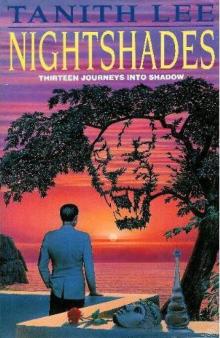 Nightshades
Nightshades Forests of the Night
Forests of the Night Wolf Wing
Wolf Wing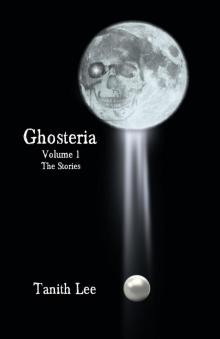 Ghosteria Volume 1: The Stories (Ghostgeria)
Ghosteria Volume 1: The Stories (Ghostgeria) Obsidian: A Decade of Horror Stories by Women
Obsidian: A Decade of Horror Stories by Women The Secret Book of Paradys
The Secret Book of Paradys Red as Blood: or tales from the Sisters Grimmer
Red as Blood: or tales from the Sisters Grimmer The Book of the Damned
The Book of the Damned Faces Under Water
Faces Under Water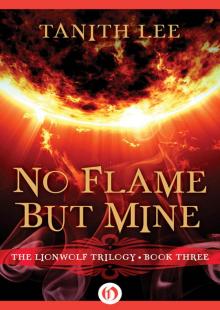 No Flame But Mine
No Flame But Mine Night's Master
Night's Master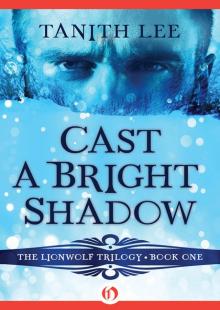 Cast a Bright Shadow
Cast a Bright Shadow Red as Blood, or Tales from the Sisters Grimmer: Expanded Edition
Red as Blood, or Tales from the Sisters Grimmer: Expanded Edition Delusion's Master (Tales From the Flat Earth)
Delusion's Master (Tales From the Flat Earth) Personal Darkness
Personal Darkness The Silver Metal Lover
The Silver Metal Lover Cruel Pink
Cruel Pink Metallic Love
Metallic Love Drinking Sapphire Wine
Drinking Sapphire Wine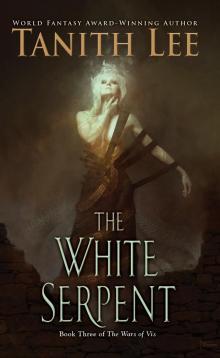 The White Serpent
The White Serpent Louisa the Poisoner
Louisa the Poisoner Don't Bite the Sun (Four-BEE Book 1)
Don't Bite the Sun (Four-BEE Book 1) Turquoiselle
Turquoiselle Death's Master
Death's Master The Storm Lord
The Storm Lord Black Unicorn (Dragonflight)
Black Unicorn (Dragonflight) Redder than Blood
Redder than Blood Dark Dance
Dark Dance Ivoria
Ivoria Night's Sorceries
Night's Sorceries Venus Preserved (Secret Books of Venus Series)
Venus Preserved (Secret Books of Venus Series) Anackire
Anackire A Bed of Earth
A Bed of Earth Red Unicorn
Red Unicorn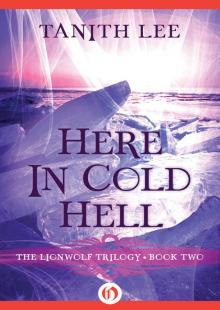 Here in Cold Hell
Here in Cold Hell Shadowfire
Shadowfire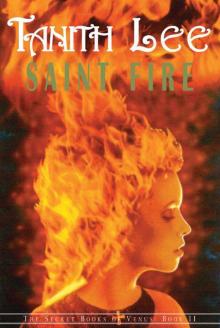 Saint Fire (Secret Books of Venus Series)
Saint Fire (Secret Books of Venus Series) Darkness, I
Darkness, I Death Dances
Death Dances White As Snow (Fairy Tale)
White As Snow (Fairy Tale)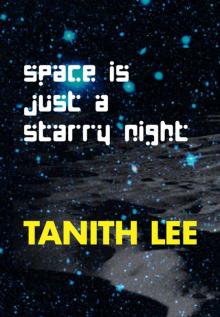 Space Is Just a Starry Night
Space Is Just a Starry Night Biting the Sun
Biting the Sun Hunting the White Witch
Hunting the White Witch Legenda Maris
Legenda Maris Kill the Dead
Kill the Dead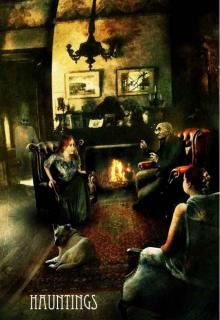 Hauntings
Hauntings Black Unicorn
Black Unicorn Law of the Wolf Tower
Law of the Wolf Tower Disturbed by Her Song
Disturbed by Her Song Delerium's Mistress: Tales of the Flat Earth Book 4
Delerium's Mistress: Tales of the Flat Earth Book 4 Mortal Suns
Mortal Suns The Silver Metal Lover s-1
The Silver Metal Lover s-1 The Book of the Beast
The Book of the Beast Weird Tales #327
Weird Tales #327 The Birthgrave
The Birthgrave